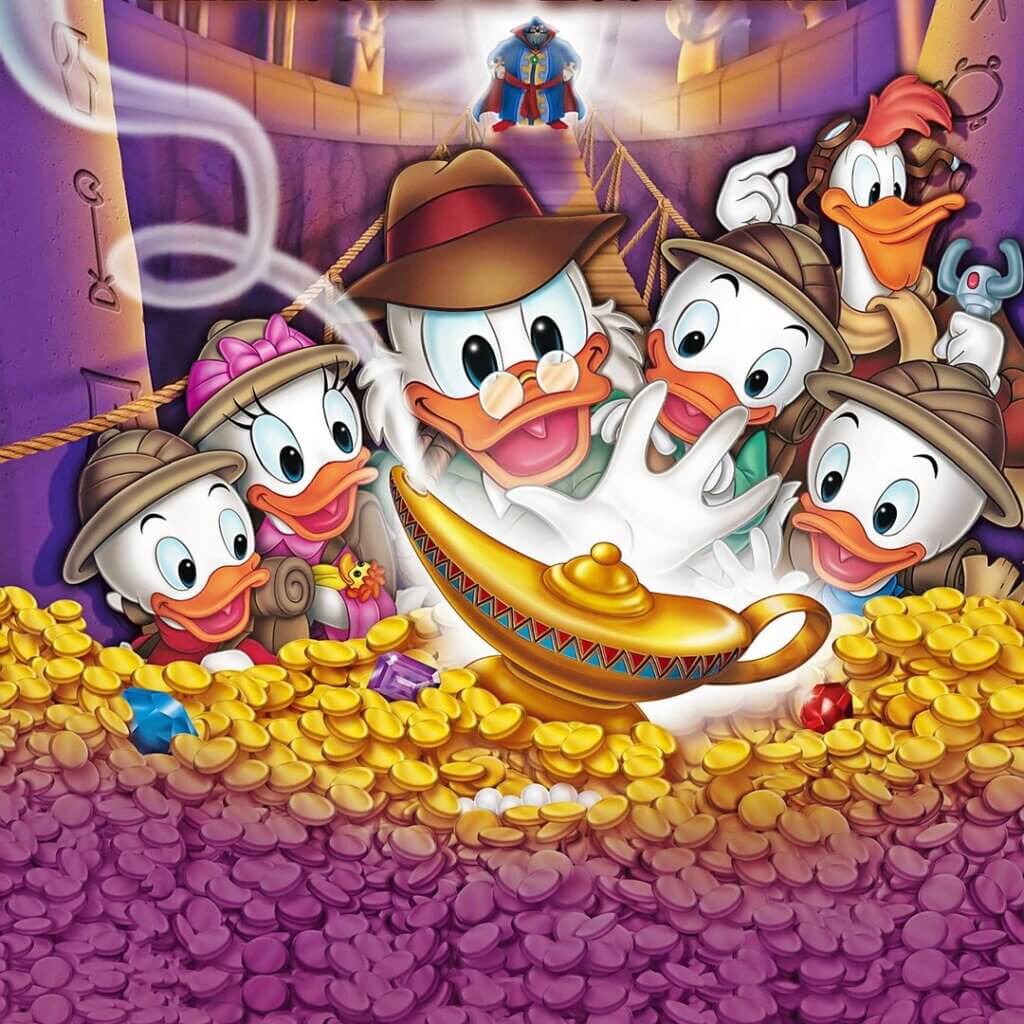The Quirky World of Scrooge McDuck: From Comics to Cartoons
Introduction to Scrooge McDuck:
Let’s start with a brief introduction to Scrooge McDuck, which mentions that he is a fictional character created by Carl Barks.
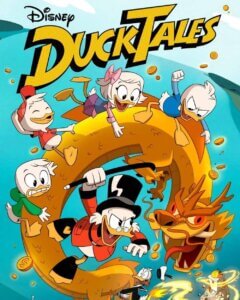
Highlight its species as a duck and its anthropomorphic characteristics, such as walking on two legs and wearing clothes.
Background and Origin:
Briefly discussing the origins of the character, mention that Scrooge McDuck first appeared in comic books published by Disney in the 1940s.
Introducing Carl Barks, the creator of Scrooge McDuck, and his contribution to shaping the character.
Money and Greed:
Emphasize Scrooge McDuck’s defining characteristic – his immense wealth. Mention that he is often portrayed as one of the richest fictional characters in the world.
Uncover his love of money and the iconic money bin where he stores his vast wealth.
personality traits:
Describe the personality traits of Scrooge McDuck. For example, they are often portrayed as smart, thrifty, and business-savvy.
Mention any quirks or quirks that contribute to his or her uniqueness.
Courageous Spirit:
Discuss the adventurous side of Scrooge McDuck. He is often portrayed as an explorer and adventurer who travels to various exotic locations in search of treasure.
Highlight their courage and determination in the face of challenges.
Relationships:
Briefly discuss Scrooge McDuck’s relationships with other characters in his fictional world. This may include family members such as Donald Duck and his nephews (Huey, Dewey and Louie).
Development over time:
Mention that the character has evolved over time in terms of both appearance and personality, as various creators and media adaptations have shaped him.
Iconic Elements:
Highlight any iconic elements associated with Scrooge McDuck, such as his top hat, cane, and distinctive Scottish accent.
The Origins in Comics Scrooge McDuck
Introduction to Carl Barks:
Let’s start by introducing Carl Barks as the American cartoonist who played a key role in creating and defining Scrooge McDuck.
Mention Barks’ association with Disney and his influential contributions to the world of comic books.
Scrooge McDuck’s Early Days:
Discuss the time frame when Scrooge McDuck was created. Barks introduced the character in the story “Christmas on Bear Mountain”, published by Dell Comics in December 1947.
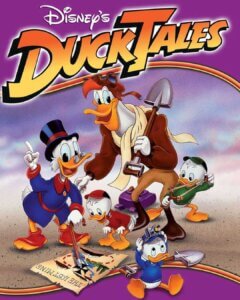
Emphasize the context of the post-World War II era and the cultural influences that may have shaped Barks’s work.
character building:
Learn how Barks developed the character of Scrooge McDuck. Highlight the early traits and characteristics that define the rich and eccentric duck.
Discuss any specific inspirations Barks drew on in creating the personality of Scrooge.
Debut Storyline:
Summarize the story of Scrooge McDuck’s debut in “Christmas on Bear Mountain.” Mention any major plot points that introduced readers to the character’s richness and adventurous spirit.
Duck Universe Expansion:
Discuss how Barks’ creation of Scrooge McDuck contributed to the expansion of the Duck universe in Disney comics. This may include the introduction of other notable characters related to Scrooge, such as Donald Duck and the nephews.
Barks’ legacy:
Emphasize the lasting influence of Carl Barks on Scrooge McDuck and the Disney comic universe. Barks continued to write and illustrate many Scrooge stories, contributing significantly to the character’s depth and popularity.
Artistic Style:
Touch on Barks’ artistic style and how it influenced the visual representation of Scrooge McDuck. Mention any specific characteristics in Barks’ portrayal that became iconic for the character.
Recognition and Appreciation:
Discuss how Carl Barks’ work with Scrooge McDuck gained recognition and appreciation over time. Barks is often celebrated for his storytelling skills and contributions to the Disney comic legacy.
Transition to Animation
Initial animated appearance:
Let’s begin by mentioning the earliest examples of Scrooge McDuck appearing in animated media. For example, Scrooge made his animated debut in the 1967 theatrical feature “Scrooge McDuck and Money”.
DuckTales (1987):
Highlight the groundbreaking animated series “Ducktales” (1987), which was instrumental in popularizing Scrooge McDuck in the animated field.
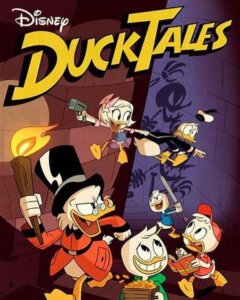
Discuss how “Ducktales” introduced Scrooge as the central character, leading beloved characters including his nephew and other iconic figures.
Voicing the character:
Learn about the voice actors who brought Scrooge McDuck to life in the animated adaptations. Mention notable artists such as Alan Young, who voiced Scrooge in “Ducktales” and others who contributed to the character’s vocal identity.
Development of Character Design:
Discuss how the character design of Scrooge McDuck evolved during the transition from comics to animation. Note any changes in appearance or animation style during this optimization process.
Adaptations in other animated shows:
Touch on Scrooge McDuck’s appearances in other animated shows or specials. For example, he may have made guest appearances in various Disney cartoons, demonstrating his adaptability to different storylines and universes.
Theatrical films and specials:
Explore any theatrical film or animated special that features Scrooge McDuck as a major character. Discuss how these adaptations contributed to the overall legacy of the character.
Reception and effects:
Discuss the reception of Scrooge McDuck in animated media. Highlight any critical praise or fan praise for his animated portrayal.
Learn how animated adaptations affected the character’s popularity and cultural significance.
Later animated series:
Briefly discuss any subsequent animated series or revivals in which Scrooge McDuck has been involved. This may include recent adaptations that have kept the character alive for new generations.
Merchandising and spin-offs:
Discuss any sales or spin-off opportunities arising from the success of Scrooge McDuck in animated media. This may include toys, video games, and other products featuring the character.
DuckTales: A Game-Changer
Introduction to DuckTales (1987):
Begin by providing a brief overview of the “Ducktales” animated series, emphasizing its premiere in 1987 and its association with Disney television animation.
Mention key creative contributors to the series, such as creator Jimin Magen and theme song composer Mark Mueller.

Scrooge McDuck as the Hero:
Discuss how “DuckTales” set itself apart from other animated shows by making Scrooge McDuck the central protagonist. This decision allowed for a deeper exploration of his character.
character building:
Learn how the series expanded on the character of Scrooge McDuck, shedding light on his past, motivations, and relationships. “DuckTales” provided a more nuanced portrayal of Scrooge beyond his wealth.
Introduction of Nephews:
Highlight the role of Scrooge’s nephews, Huey, Dewey and Louie, in “Ducktales.” Discuss how their characters developed and how they contributed to the dynamics of the show.
Villains and Supporting Characters:
Discuss the memorable villains and supporting characters introduced in “DuckTales”. The series included characters such as Launchpad McQuack, Mrs. Beakley and others who became integral parts of Scrooge’s adventures.
Iconic Theme Songs:
Cue the iconic “DuckTales” theme song composed by Mark Mueller. This theme became synonymous with the show and contributed to its overall popularity.
Storytelling and Adventure:
Explore the storytelling format of “DuckTales” and how it balances episodic adventures with broader story arcs. Discuss notable stories and episodes that left a lasting impact on audiences.
cultural event:
Discuss how “Ducktales” became a cultural phenomenon during its run. The show captured the attention of audiences and contributed to the widespread popularity of Disney animated series in the late 1980s and early 1990s.
Impact on Merchandising and Brand:
Explore the business opportunities arising from the success of “Ducktales”. The popularity of the show contributed to the creation of a wide range of merchandise showing its influence on the Disney brand.
Legacy and revival:
Discuss how “DuckTales” left a lasting legacy, influencing later animated series and adaptations. Cue the 2017 reboot of “Ducktales,” showcasing Scrooge McDuck and the franchise’s enduring appeal.
Fan Community:
Highlight the fan community that emerged around “Ducktales”. Discuss how the show continues to have a dedicated fan base that celebrates its nostalgia value.
Quirks and Traits
Frugal money-lover:
Discuss Scrooge McDuck’s extreme love of money. He is notorious for being frugal and is often portrayed as going to any lengths to save or accumulate wealth.
Explore examples where Scrooge’s thrifty nature leads to humorous or adventurous situations in both comics and animated media.
Money Bin:
Highlight Scrooge’s iconic Money Bin, a massive building where he stores his vast wealth in coins. Dive deep into the absurdity and uniqueness of having a building full of money.
Discuss the significance of the money bin in various stories and how it reflects Scrooge’s eccentric relationship with money.
Money-swimming:
Explore the famous image of Scrooge McDuck swimming in his money. Discuss how this eccentric activity became an iconic representation of his character and a symbol of his wealth.
Touch the humor and irony of the duck swimming in gold coins.
Thrill for the sake of adventure:
Discuss Scrooge’s adventurous spirit as a quirk. Despite his love of money, Scrooge often goes on adventurous expeditions and searches for treasure.
Learn how his adventurous side adds complexity to his character, making him more than just a stereotypical miser.
Peculiar Speech Patterns:
Address any strange speech patterns or catchphrases associated with Scrooge McDuck. For example, his distinctive Scottish accent or “Bah, humbug!” Expressions like. Additional eccentricities may be explored.
Oddities in Business Practices:
Dive deeper into Scrooge’s unique business practices. He may engage in unconventional or humorous methods to protect and expand his wealth, providing insight into his eccentric approach to entrepreneurship.
Relationship with family:
Find out how Scrooge’s relationships with family members like Donald Duck and his nephews demonstrate his eccentricity in a more personal context.
Discuss moments where his love of family intersects with his love of money, creating interesting dynamics.
Flashbacks and Backstory:
Dig deeper into any flashbacks or backstory elements that reveal the origins of Scrooge’s eccentricities. This may include events or experiences that shaped his or her character over time.
Contrasts with other characters:
Discuss how Scrooge’s eccentricities differ from those of other characters in his fictional universe. Whether it’s Donald Duck’s laid-back attitude or his nephews’ adventurous spirit, explore the dynamics created by these differences.
Development over time:
Find out how Scrooge McDuck’s eccentricities have evolved over time with different creators and adaptations. Analyze any notable changes or additions to her character that contribute to her eccentric charm.
Cultural Impact
Comic Book Roots:
Discuss the origins of Scrooge McDuck in comic books, emphasizing the character’s origins in the works of Carl Barks. Barks’ storytelling and characterization laid the foundation for Scrooge’s cultural importance.
DuckTales and Animation:
Explore the influence of the “DuckTales” animated series (both the original 1987 version and the later reboot). The show introduced Scrooge McDuck to a wider audience and was instrumental in making him a household name.
Merchandising and Products:
Discuss the wide range of merchandise and products featuring Scrooge McDuck. Scrooge’s image has been used in a variety of consumer goods, from toys and clothing to collectibles, contributing to his iconic status.
Theme Parks and Attractions:
Explore Scrooge McDuck’s appearances in theme parks and attractions. Many Disney theme parks feature Scrooge in parades, shows, and meet-and-greets as a character, cementing his place in the broader Disney cultural experience.
Crossover Appearance:
Discuss the crossover event and Scrooge’s presence in the media. The character has moved across various Disney properties, strengthening his cultural relevance within the larger Disney universe.
Memes and Internet Culture:
Check out the presence of Scrooge McDuck in internet culture and memes. Memorable scenes, quotes, or images associated with the character may go viral, allowing him or her to become involved in popular online discussion.
References in popular media:
Learn how Scrooge McDuck has been referenced or parodied in popular media outside of Disney productions. His image and characteristics may appear in cartoons, TV shows, films, and even advertisements, demonstrating his cultural penetration.
Literary and Academic Recognition:
Discuss any recognition that Scrooge McDuck has received in literature or academic discussions. Critical analysis, reference in scholarly works, or inclusion in cultural studies can highlight the character’s influence on broader discourse.
Generational Effects:
Learn how Scrooge McDuck’s popularity spans generations. Fans who grew up with the character in the comics may introduce younger audiences to Scrooge through animated shows or other media, creating a multi-generational fan base.
Iconic Symbolism:
Discuss any symbolic elements associated with Scrooge McDuck that have contributed to his iconic status. This may include his money bin, his image swimming in coins, or his signature top hat and cane.
Social commentary and legacy:
Examine whether Scrooge McDuck has been used as a medium for social commentary. The character’s depiction of wealth, greed and adventure will resonate with audiences in a way that goes beyond entertainment and contributes to his lasting legacy.
Legacy and Future
Comic Book Legacy:
Start by exploring Scrooge McDuck’s legacy in the world of comic books, focusing specifically on his origin created by Carl Barks. Discuss how Barks’ storytelling and character development shaped Scrooge’s initial appearance in the comics.
Contributions to Disney comics:
Highlight Scrooge’s significant contributions to Disney comic books. Discuss how his character became a central figure in Disney comics, often starring in his own adventures or teaming up with other Disney characters.
Artistic Development:
Explore how the visual representation of Scrooge McDuck in comic books evolved over the years. Different artists may have brought their own unique styles to the character, contributing to his iconic look.
Storytelling and Adventure:
Consider the influence of Scrooge’s adventures in comic book storytelling. Discuss memorable story arcs, plots, and themes that have become classics in Disney comic lore.
Depth and Complexity of Character:
Examine how the character of Scrooge developed and deepened in the comics. Discuss examples where their personality, motivations, and relationships were explored in more depth, adding layers to the character.
Cultural significance in comics:
Discuss the broader cultural significance of Scrooge McDuck within the realm of comic books. Find out how his character has influenced the storytelling traditions, character ideals, and themes of Disney and beyond.
Transition into animation:
Changes to Scrooge McDuck’s legacy in animation. Discuss how the character made the jump from comic book pages to the animated screen, particularly through the success of the “DuckTales” animated series.
Iconic Animated Moments:
Explore the impact of iconic animated moments featuring Scrooge. Discuss scenes or episodes that have become memorable and demonstrate the character’s appeal in animated storytelling.
Voice actors and performances:
Discuss the contributions of the voice actors who played Scrooge in animated media. Different performances may have added unique nuances to the character, which will affect how audiences view him.
Popularity and Endurance:
Consider the enduring popularity of Scrooge McDuck in both comics and animation. Consider how this character has remained relevant and beloved across generations.
Revival and Reboot:
Discuss any revivals or reboots that have brought Scrooge McDuck back into the spotlight. Learn how these adaptations have maintained or redefined his legacy for contemporary audiences.
Fan Engagement and Fandom:
Explore fan engagement with the legacy of Scrooge McDuck. Discuss fan communities, conventions, and the continued enthusiasm for the character in both comics and animation.
Influence on future compositions:
Discuss the influence of Scrooge McDuck on future creations in comics and animation. Consider how aspects of his character may have inspired or paved the way for other characters and stories.
Conclusion
Introducing Scrooge McDuck’s origin in the comics:
Let’s begin by briefly introducing Scrooge McDuck’s origins in comic books, with an emphasis on his creation by Carl Barks. Highlight the character’s early appearance and development in the comic book medium.
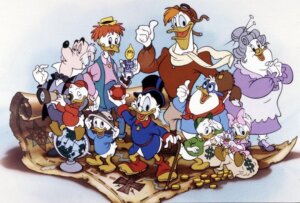
Importance of contribution of Carl Barks:
Discuss the importance of Carl Barks’ contribution to the character of Scrooge in the comics. Emphasize Barks’ role in shaping the personality, traits, and adventures that define Scrooge in the comic book world.
Scrooge’s evolution in comic books:
Outline the development of the character Scrooge McDuck in the pages of comic books. Discuss major storylines, character development, and the rise of Scrooge’s popularity in comic book storytelling.
Transition to animated media:
Explore Scrooge McDuck’s transformation from comics to animated media. Discuss the decision to adapt the character for animation and the initial challenges or opportunities it posed.
Debut in animated series:
Highlight Scrooge McDuck’s animated debut, especially in the context of the “DuckTales” animated series. Discuss how the show introduced Scrooge to a wider audience and brought his adventures to life on the small screen.
Success of DuckTales (1987):
Discuss the success and influence of the original “Ducktales” animated series in 1987. Learn how the show not only entertained audiences, but was also instrumental in establishing Scrooge McDuck as a beloved animated character.
Character Design and Animation Style:
Touch on how Scrooge’s character design and animation style evolved from static images in the comics to dynamic, animated depictions in “DuckTales.” Discuss any significant changes in visual representation.
Expanding the Animated Universe:
Discuss Scrooge’s continued presence in animated media beyond “Ducktales”. Learn how the character has appeared in other animated series, specials, and adaptations, showcasing his adaptability to different animated universes.
Reboot and mod optimization:
Summarize any reboots or modern adaptations that continue the journey of Scrooge McDuck in animated media. Discuss how the character has been reintroduced for contemporary audiences while maintaining his original characteristics.
Heritage of Travel:
Conclude by summarizing the overall legacy of Scrooge McDuck’s journey from comics to cartoons. Discuss the character’s enduring popularity, impact on popular culture, and continued fascination with his exploits in various storytelling mediums.

